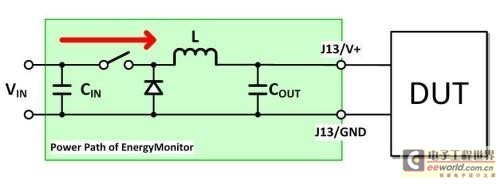San Jose, Calif. -- The Embedded Microprocessor Benchmark Association (EMBC) recently announced a series of test plans to measure the power consumption of ultra-low-power microcontrollers. The ULPBench-CP is the first tool in the ULPBench family, which is targeted at MCUs that consume less than 28 mA in active mode.
The Embedded Microprocessor Benchmarking Association is a non-profit organization founded in 1997 to develop benchmarking software that helps designers select the right embedded processor for their system. The benchmark algorithms developed by EMBC and the applications developed form a number of benchmarks for consumer electronics, digital entertainment, networking, automotive/industrial, telecommunications, Java and office equipment products.
The ULPBench-CP is designed to test MCUs for medical implants and IoT devices that use coin cells. The greatest common denominator of these devices is long-term use, no replacement or minimal power replacement, so for MCUs. Ultra-low power requirements are particularly stringent.
The standard currently applies to 8-bit, 16-bit and 32-bit MCUs, capable of testing their power modes and hardware real-time clocks and calendars. In the future, it will be able to detect the power consumption of these MCU peripherals and other hardware.
EMBC stipulates that an analog processor environment must accurately reflect real-world features with cycle accuracy, including instruction latency, pipeline interlock circuitry, branch latency and lookahead errors, and cache misses. To meet these requirements, it has also established an ever-expanding database of certification benchmark scores, which are now freely available on the EEMBC website.
The ULPBench-CP benchmark runs the MCU's memory, algorithm, sequencing, and general purpose I/O function functions to measure the power consumption of the MCU. The data is then collected and passed through the computer to establish the chip's duty cycle to determine when to perform what function and when to enter the low power mode. It determines the average energy of 10 ULPBench cycles per second for a median of 5 times. Finally ULPMark shows 1 000 divided by the median.
The test tool EnergyMonitor is also able to test MCU performance without the ULPBench-CP benchmark. The tool can be connected to the PC via USB, and its test data is displayed on the PC, and the user can observe the position corresponding to the result through the corresponding tool.
Agilent, ARM, Atmel, Cypress, Renesas, TI and other companies have participated in the development of the standard, which will be implemented in June this year. Companies interested in this can also participate in the development of subsequent versions of the series.

ULPBench uses a fixed pulse density quantum as an energy pulse to measure power consumption
Male Pin Headers & Min Jumper Series
Mini Jumper:The short-circuit cap is a 1.27mm,2.00mm, 2.54mm 5.08mm circuit sheet metal. As long as it is 2 pins, the short-circuit cap can be used to short it.
What is the function of the short circuit cap? Short circuit cap, I call it short circuit block. For example, if you use a single row of pins, you can use the short circuit block to short circuit the two adjacent pins (that is, to realize the connection on the circuit). For example, if you have a three wire pin, you can use a short circuit block to realize the function of dial switch.
Mini Jumper
ShenZhen Antenk Electronics Co,Ltd , https://www.coincellholder.com